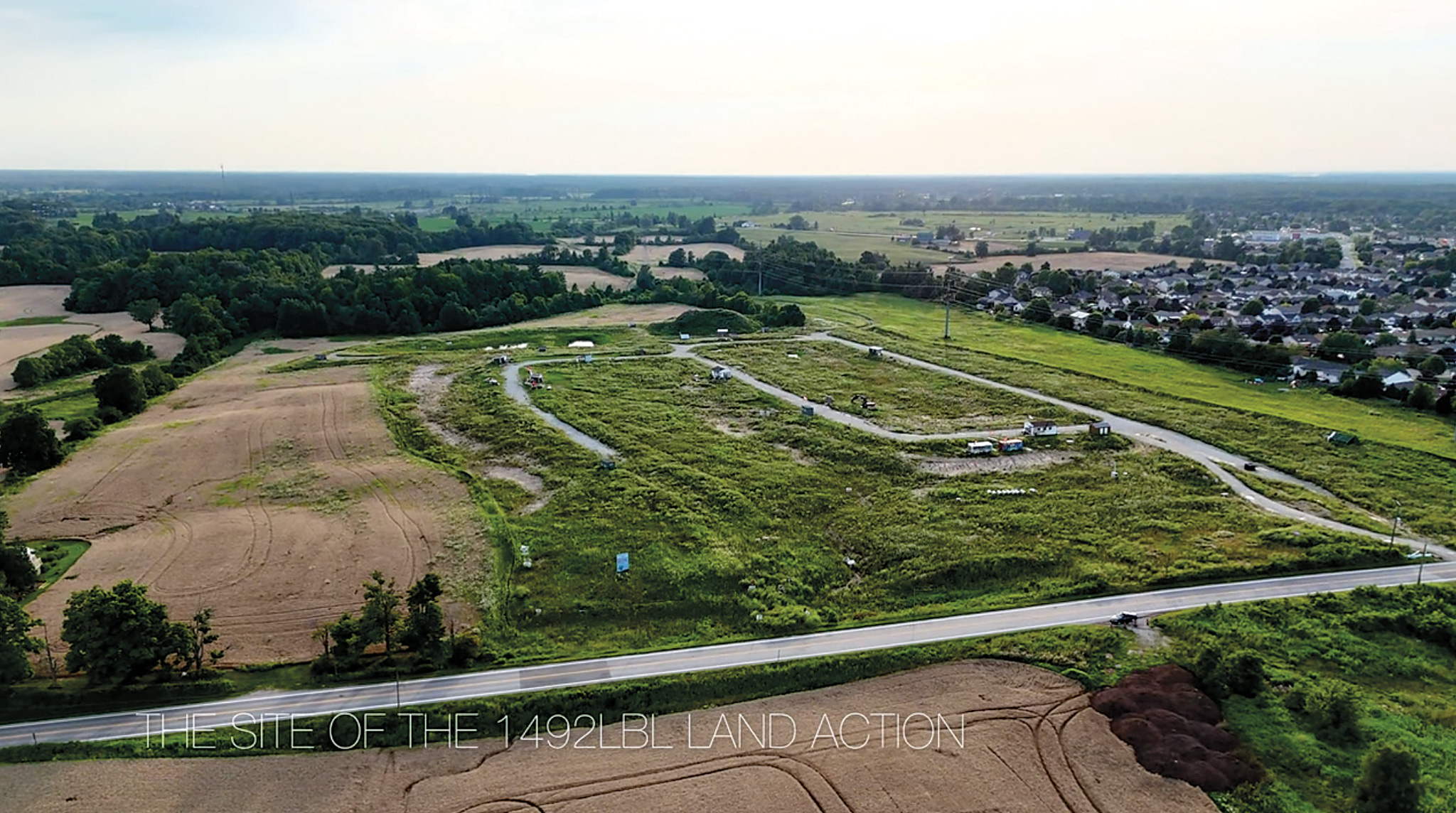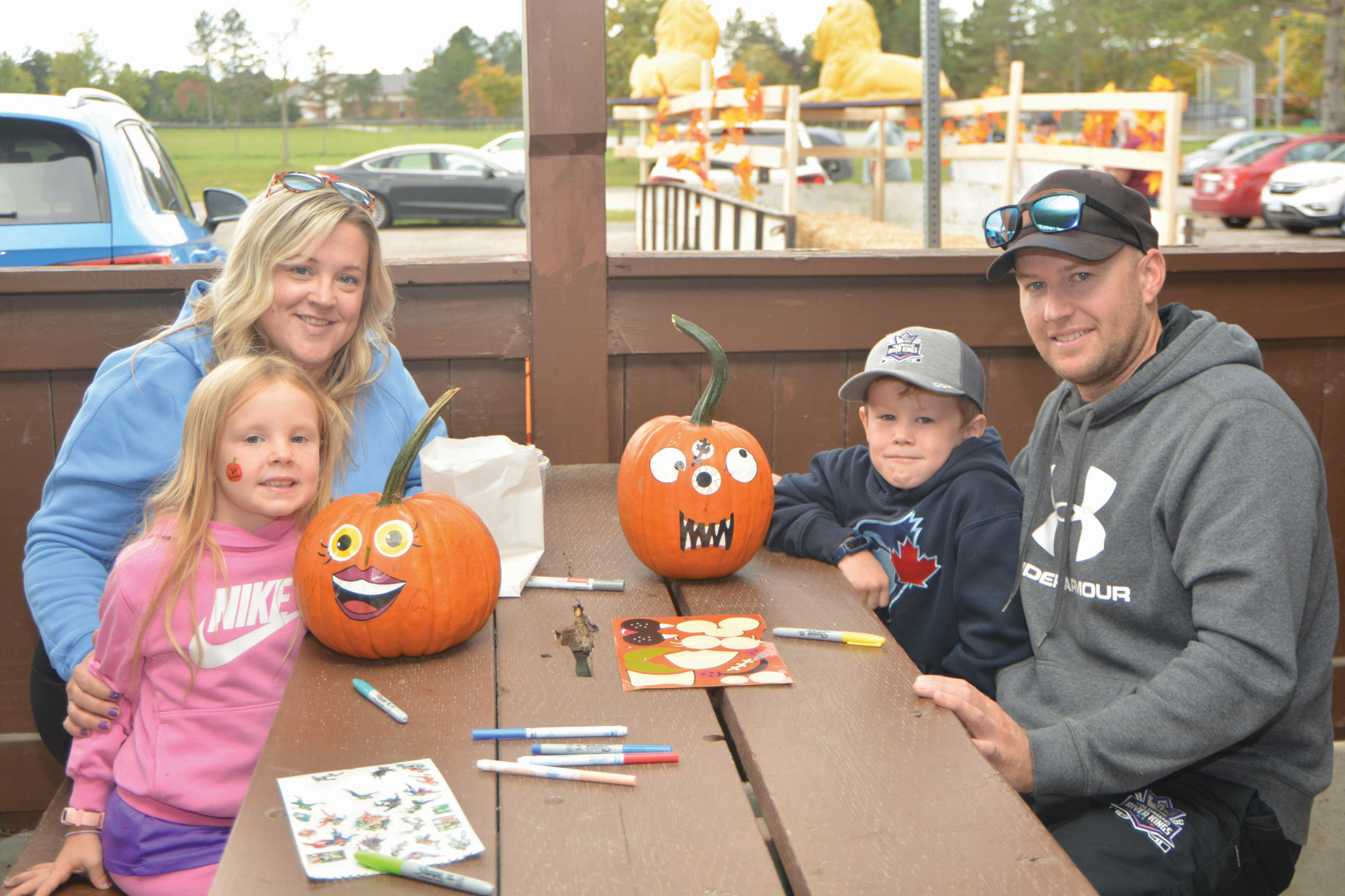We know the siren call, faint at first before screaming past our home. We exhale with relief and send thoughts or prayers to those in the shiny red truck with the flashing lights that they safely accomplish their mission to unflinchingly save one of us. The Haldimand Press sat down with Manager of Emergency Services and Fire Chief Jason Gallagher and Deputy Fire Chief Rodger Hill to understand what draws Haldimand’s 274 volunteer firefighters to service, and why their legacy will continue.
The following has been edited for clarity and space.
Both of you came up in your careers as volunteer firefighters?
Hill: I started out as a volunteer in Lowbanks area. I was 19-years-old, and it started out with a coworker who asked me if I was interested in joining in. I thought, “Sure, what the heck, I’ll check it out.” Back in those days, it was more of a judgment of your peers; where now it’s a little bit more formal education experience, that kind of stuff. I could have transferred as a captain, but I wanted to earn the respect of the firefighters. I knew a lot of them. I grew up with them, I wanted to start over and work my way up, if that should be the case. Yeah, and I did.
Gallagher: A lot of my friends growing up in Hagersville had fathers who were volunteer firefighters, and I went to some of the fire events with them. What struck me was the camaraderie between the firefighters, and it struck me as, “That’s something I want to do: be a firefighter.” So when I was in high school, again, kind of the same thing, hanging out with fr iends and I knew I wanted to be a firefighter. Then it was called the Ambulance and Emergency Care Program, and they had a look at a resume when applying to the fire department. I kept my foot in the door in regards to hanging out with my friends who were (or were related to) firefighters and that sort of thing, and I graduated Ambulance and Emergency Care, got hired at the time with West Haldimand General Hospital as an ambulance attendant. I began volunteering so I could show my face, show my interest, and then applied to the fire department and was lucky enough to get on my first time. Back then, when you applied in Hagersville, it was usually your second or third time you got on because there was a lot of interest. I was only 19, so I was lucky enough to get on with them.

The draw to volunteering is multifold.
Hill: There is an excitement to emergency response, and the ability to help people. We run into vulnerable people who may have had more groceries, as example, than they can carry and we’re there and help out. We tend to show up in the most vulnerable moments, often it’s their worst moment. This is always hard, but there is the steadfast willingness to help, and yes, sometimes the excitement. But there are the good times, there’s the bad times. The fact that you’ve tried to help is fulfilling for a firefighter that, you know, they’ve either made the difference or tried to make the difference in helping. We also have a lot of fun. When you go out and do some of these events and go to schools, or help someone, it means something. We can make the difference for people without a fire, too.
Volunteering is not for the meek.
Gallagher: You have to be very committed. There’s expectations from not only the fire marshall as far as your training that you need – every firefighter has to be certified to get you there, which we will – it takes a lot of commitment within the first year just to become certified. Once you’re certified, there’s continuing training that we offer, plus mandatory training throughout the year that we offer. So very committed to the position. It’s very important to not commit until you have family buy in, because life’s busy to begin with and it’s not a scheduled position. You don’t know when the pager is going to go off. You’re going to miss Christmas dinner, you’re going to miss New Year’s Eve, you’re going to miss birthdays, etc.
Hill: I’ve been to a couple of big ones, like the Hagersville Tire Fire and the Rosa Flora Fire; it was terrifying. I’ve been to car accidents where they are terrible – kids and that trauma. But I also was responding to a car accident that involved a family member; it’s very tough to deal with. And that’s something that volunteers being in a small community, you may well know who you are trying to save, and you have to deal with it.
It’s worth it.
Gallagher: It’ll be the best job they ever had, but it’ll be the hardest job they ever had. Not only is it physical, it’s mental as well. We have a way better process than we did in the past. Some of us, myself included, have been diagnosed with Post Traumatic Stress Disorder because there weren’t the supports like there are today. But Haldimand has a good Employee Assistance program. We have some internal resources that we can provide to the firefighters, but that’s part of it. Get to know what you’re getting into.
It helps to have life experience.
Hill: It does help. If they had those trades, if they know construction, build houses, electrical, plumbing. We run into stuff where it’s great to specialize in those items. Lightweight building construction now is a nightmare for firefighters.
Gallagher: I believe that someone getting into firefighting, the volunteer or paid on-call is the best route to go because it gets them the experience in firefighting and gets them the life experience that a lot of career departments are looking for. Is it unusual that somebody comes right out of college at 20 years old and becomes a career firefighter? No, but most career fire departments are moving towards and have been hiring, and what we’ve been seeing as a trend is that they’re hiring, on average, people that have life experience. My son is following that same route. He’s only 21. He took the college course. My communication to him was to get in with a part paid on call or a volunteer department. Get that experience.
Volunteering as a firefighter will continue.
Gallagher: In 2026, every firefighter in the province of Ontario has to be certified to the same level regardless. There’s always going to be the need for volunteer firefighters. Now, as municipalities grow, they are going to have to start looking at career firefighters. We as a department have that on our radar as the municipality grows, and we’re one of the largest growing municipalities in the province. Are we going to need a career fire department in the future? Possibly. It’s not guaranteed because there are other options that we can do to staff trucks. But there will always be the need for volunteers. It’s a stepping stone. We’ve got a lot of firefighters who started as volunteer who are now career firefighters and stay on as volunteer firefighters.
Recruitment is coming up.
If you or someone you know is considering service, the County is offering two upcoming information sessions at the administrative building at 11 Thorburn St. Cayuga, on October 19 and November 28 at 7 p.m. For more information, email emergencyservices@haldimandcounty.on.ca





